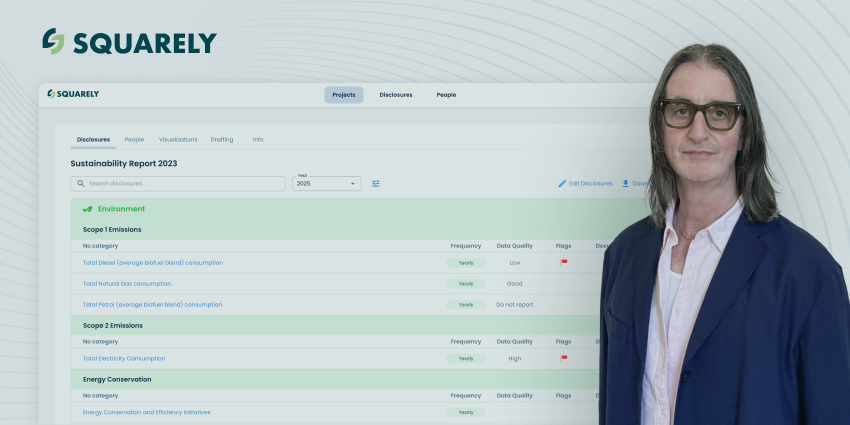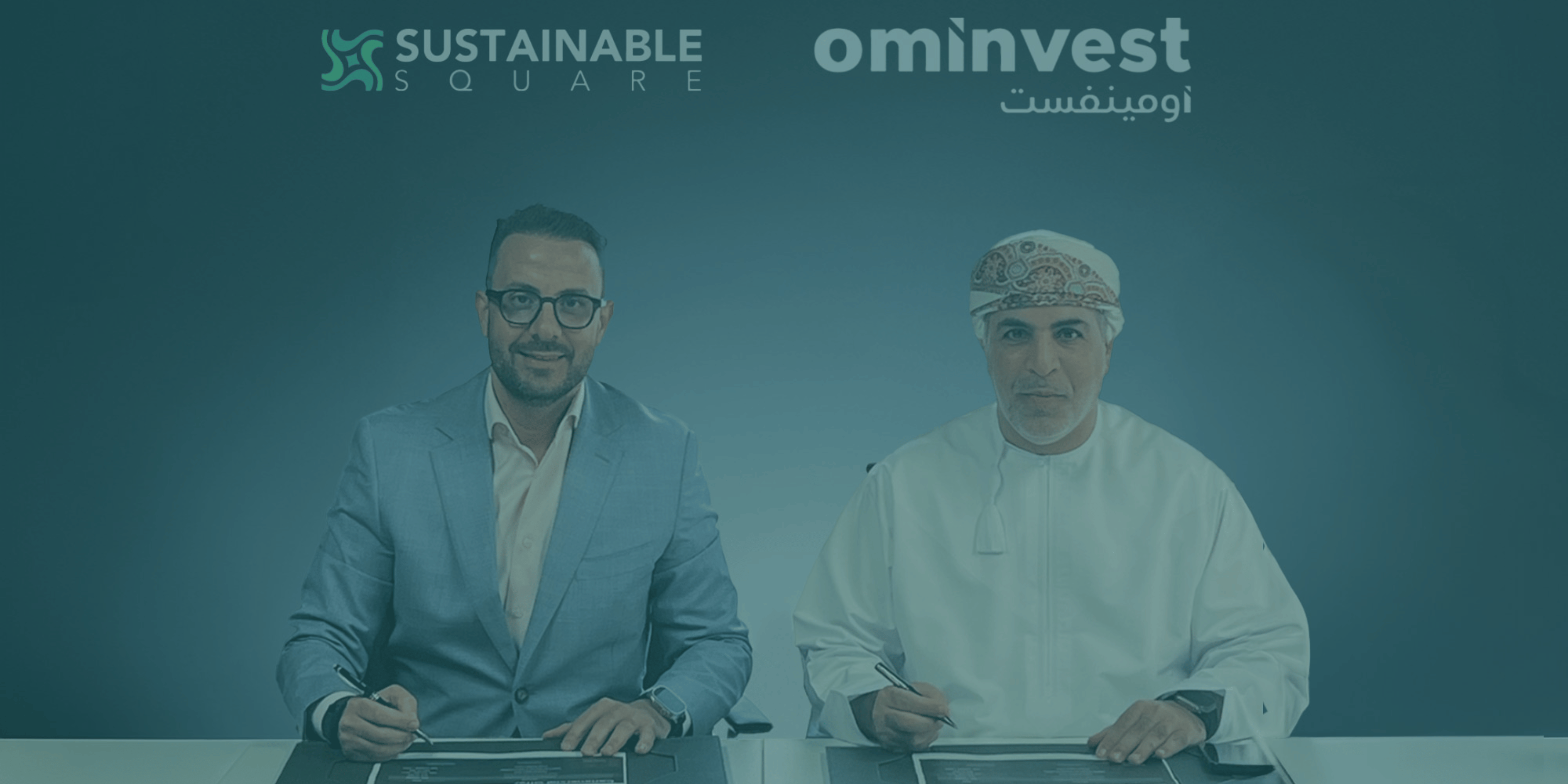SHAKING UP SUSTAINABILITY AT YOUR ORGANIZATION STARTS WITH YOU
The global conversation on Sustainability continues to evolve as business men and women, leaders of state and industry, shift from the practices that they once believed served the best interests of their stakeholders to the explicit purpose of sustaining their businesses, while contributing positively through intentional impact on their surroundings. It is up to each person and entity to decide how they wish to approach their sustainability performance, but some general trends are useful for all looking to make the leap into actively monitoring, controlling, and transparently reporting.
So what’s the relevance of sustainability for us all?
Since the signature of a global understanding and direction, manifested through the 17 Sustainable Development Goals (SDGs), not only the concept of Sustainability has spread massively, but more and more public and private organizations are uniting efforts to achieve them. Achieving the SDGs requires a cross-generational mindset shift, that would help preserve our ecosystem and ensure prosperity for all, which is the definition of Sustainability that this article strives to keep as the ultimate objective: A state in which everyone can achieve their life ambitions without compromising their neighbor’s present nor future.
So, what’s your take and what needs to be shaken?
As you clicked the link and decided to take a few minutes of your precious time to read this article, it’s assumed that you are already aware of a few things you can do as an individual to achieve our global agreement on sustainability:
-
Perhaps, you are no longer asking for straws when going out and would probably get angry at your friends if they do, yet you know that even though a small action makes a difference since there are 8 million tons of plastic ending up in our oceans every year, the major problem is related to waste management.
-
Perhaps, you decided to promote a carpooling initiative at your company amongst your colleagues to reduce your environmental footprint. Yet, you know that in order to reduce the carbon emissions our generation is being held accountable for, we need stronger carbon management policies and that based on the latest research studies, we’ve got between 12 and 30 years of current emissions before we spend our Carbon Budget for a 50% chance of less than 1.5Cº warming.
-
Perhaps, you try to turn off the lights at home when no one is using them, maybe you replaced your old light bulbs for led lights, or you only open up the tap when you have finished brushing your teeth. Yet, you know that water and energy efficiency is much more complex than that since there are at least 2 billion people facing water shortages at least once a month and that there are such inefficient grid systems in developing countries, where 30% to 50% of the electricity is lost during distribution.
Does this describe you or your peers? If so, what are the next steps?
You’ve probably felt this internal push to take this conversation forward, understanding that you’ve got a massive responsibility in your hands which is spreading the message, starting with your inner circle and then bringing the message to your entire organization. But how?
The following is a list of simple steps to spark thought-provoking conversations internally, that will lead to your organization inevitably taking action:
-
The Initiation: Check your organization’s website (or internal documentation) and look for a CSR & Sustainability section to start off. In the best-case scenario, you will find a clear sustainability statement, the desired state of sustainability performance and the expected year to achieve it, a complete set of context and stakeholder-driven data, and finally a sustainability report aligned to global standards, disclosing what has the organization accomplished, the main challenges ahead, and the future commitments. Identify the potential loopholes, gaps and most importantly, areas that match your business’s interest, needs, or realities.
-
The People: Once you have reviewed the fundamentals whether there’s everything in place or not, the next step is to start asking questions internally. Reach out to the Sustainability Team or perhaps the committee responsible for watching over the organization’s sustainability performance. Identify the ones you must partner with to upscale your initiatives, whether it’s an app to encourage others to join the carpooling initiative you’ve been doing for a while, or to promote a zero-plastic campaign at the workplace. Note: In case there is not a clear final responsible for corporate sustainability, you’re encouraged to urgently get in touch with your top management to open up the discussion.
-
The Strategic Direction: It just gets bigger from now on and here’s how. Proceed to question where’s your company headed, are there clear goals and milestones for the upcoming years? Are there macro-objectives set, like contributing to the reduction of your country’s carbon emissions goal? Are there guiding policies in place, ensuring a responsible procurement, fair billing and transparent pricing for your customers, corporate volunteering, wellness practices that encourage your employees to thrive instead of exploiting and burning them? If not, take one of those sustainability topics and create an obsession out of it. Ask your Learning & Talent Development officer to invite experts to speak about the topic you have selected, until there’s a considerable number of colleagues aware of the impact they can collectively create, for example, pushing a Carbon Neutrality Strategy forward.
-
The Business Case: Here’s where the mindset shift component comes in. Your sustainability initiatives might be often seen (mistakenly) as “green stuff” (usually, but not limited to older generations) yet, there are clear implications of the implementation of your initiatives in the business model that can save costs, gain more customers, win you projects globally and, as previously mentioned, preserve our ecosystem. Take some time during your breaks to keep doing some research on your topic and proceed to map out the major benefits for your organization, for instance, how much will the energy bill decrease because of the installation of solar panels?
-
The Pitch: As of now you’ve probably changed the novel on your nightstand for insightful papers and inspiring case practices. That’s when you know that the time has come. Prepare yourself (well, not only yourself because you’ve gained quite a few allies in the process), by answering the following questions: How will this add value to the organization? How is this going to look like when fully implemented? What is it going to take to get there? Finally, proceed to book the meeting with your top management and let the show begin, but don’t forget to bring them both proven concepts, and data/ideas that they can “decide” upon. You want everyone to buy-in and take action in this process, but you also want it to be in line with what is expected of you by your stakeholders, so drive this conversation with your hazard lights on.
Whether your initiative proceeds or not, you have already moved, or, shaken your company’s thinking by putting sustainability on the agenda. Carrying on this duty isn’t easy and you do not have to do it alone. Sustainability is a communal goal, so involve people and don’t be afraid to ask diverse thinkers in to support you.
In case you have made it all the way here but are still unclear of your individual contribution, start by turning down the straw or plastic bottle, and you can do your part to decrease the 8 million tons of plastic entering our oceans each year. A small change in behavior is difficult to make, but it is the only way we can truly impact the world.




